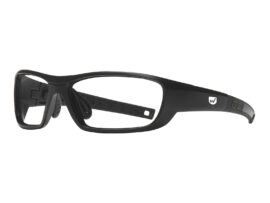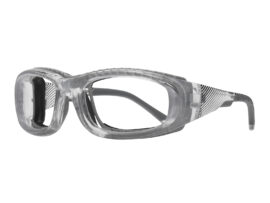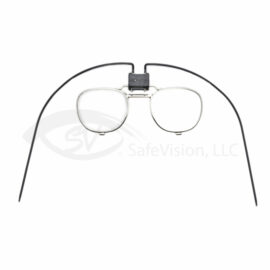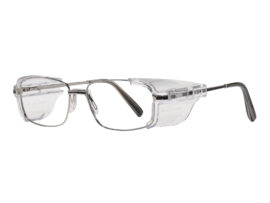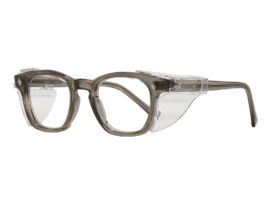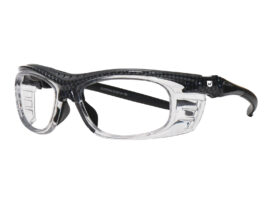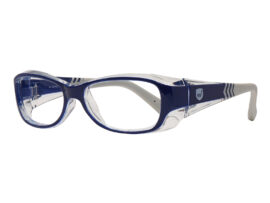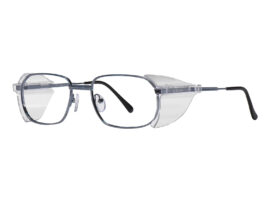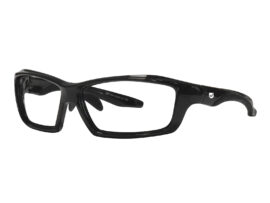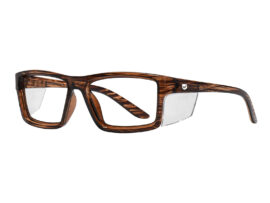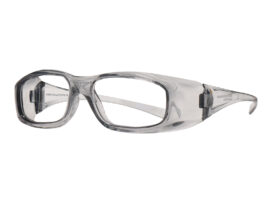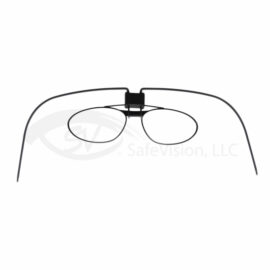Employee, Eye Health, Safety, Safety Glasses
Keeping Your Eyes Safe in Laboratory Environments
Laboratory work presents potential eye hazards—from chemical splashes and airborne particles to exposure to intense light or pressurized systems.
Proper eye protection is essential for preventing injuries that can occur suddenly and have lasting consequences.
Common Eye Hazards in Labs
According to the U.S. Bureau of Labor Statistics, thousands of eye injuries are reported yearly in professional and academic lab settings.
The most common causes include contact with hazardous chemicals, flying debris, and mechanical accidents. Many of these incidents could be prevented with the consistent use of task-appropriate safety eyewear.
Chemical Splashes
Acids, solvents, and other reagents can cause serious damage in contact with the eye. Even small amounts can lead to corneal burns, vision loss, or long-term irritation. Laboratory personnel working with liquids should wear sealed eyewear rated for D3 (splash protection) under ANSI Z87.1 standards.
Airborne Particulates
Some procedures, such as mixing powders, transferring biological samples, or using compressed gases, may generate dust, fine particles, or aerosols. In these cases, D4 or D5-rated eyewear is recommended to guard against airborne contaminants entering the eye.
Impact Hazards
While less common than chemical risks, broken glassware dropped tools, or sudden equipment malfunctions can result in blunt force injuries. ANSI-rated impact-resistant lenses, such as those made from Trivex® (Phoenix®) or polycarbonate, provide essential protection against sudden projectiles.
Radiation and Light Exposure
Laser use, UV sterilization equipment, and certain optical instruments can emit hazardous wavelengths. Depending on the application, lab workers may need eyewear that includes UV, IR, or visible light filtering.
Types of Safety Eyewear for Lab Settings
The type of protective eyewear needed depends on the procedure being performed and the materials in use. Here are common options:
Safety Glasses (ANSI Z87.1)
Suitable for general protection against impact and minor splashes; ideal for dry labs or observational work.
Safety Goggles (Sealed)
Required for chemical handling, splash zones, or any procedure involving hazardous liquids.
Prescription Safety Eyewear
Allows wearers who need vision correction to avoid doubling up with ill-fitting goggles over glasses. Available in sealed or frame-style designs, depending on the application.
Face Shields
Used in addition to eyewear for high-risk applications, especially those involving reactive chemicals or potential pressure releases.
In environments requiring prescription eyewear, prescription-ready sealed goggles or low-profile frames with side shields can improve compliance and eliminate visual distortion caused by layering glasses.
Lens Material and Coatings
Phoenix lenses, made from Trivex material, are a reliable choice for labs due to their combination of chemical resistance, high impact protection, and optical clarity. Unlike polycarbonate, Phoenix is more resistant to degradation when exposed to common lab solvents and cleaners.
Other enhancements to consider:
Anti-fog coatings
Ideal for environments where masks are worn, or temperature changes occur frequently.
Scratch-resistant coatings
Helps maintain lens clarity in high-use settings.
Photochromic or blue light filtering options
Useful in research labs with varying light conditions or extended screen time.
Choosing the Right Fit
Proper fit is essential in lab settings. Gaps between the frame and face reduce effectiveness, particularly in splashes or dust areas.
Lab personnel should consider the following:
-
- Adjustable nose pads and temples for a snug, comfortable fit
- Foam-lined or sealed frames for better splash protection
- Models designed to accommodate masks or respirators without fogging
Fit testing or trying on samples can benefit teams before purchasing in bulk. A corporate safety eyewear program can help standardize department frame types while allowing individual prescriptions and enhancements.
Ensuring Compliance in Academic and Research Settings
In university or research labs, compliance often depends on access and awareness.
Providing safety eyewear that is comfortable, optically clear, and appropriate for the task makes consistent use more likely. Lab managers should evaluate:
-
- Whether the safety eyewear provided meets ANSI Z87.1 impact and splash standards
- If staff or students using corrective lenses are equipped with prescription safety glasses
- Whether eyewear is regularly cleaned and maintained (especially in shared-use spaces)
Integrating safety eyewear into onboarding or training procedures for educational institutions ensures expectations are clearly communicated and followed.
SafeVision provides a wide range of ANSI Z87.1-compliant prescription safety eyewear suitable for laboratory environments, including sealed goggles and chemical-resistant lens options. Individuals and organizations can select eyewear that meets safety standards and specific workplace needs with access to durable lens materials like Phoenix and customizable enhancements.
Frequently Asked Questions
These ANSI Z87.1 markings indicate the type of particulate or liquid protection provided.
- D3: Splash/droplet protection
- D4: Dust protection
- D5: Fine dust protection
For labs handling chemicals or powders, eyewear with D3 and D4/D5 ratings is recommended depending on the materials involved.
Phoenix lenses (Trivex) are more resistant to chemical damage than polycarbonate. They maintain clarity and structural integrity better in environments where cleaning agents or solvents are frequently used.


